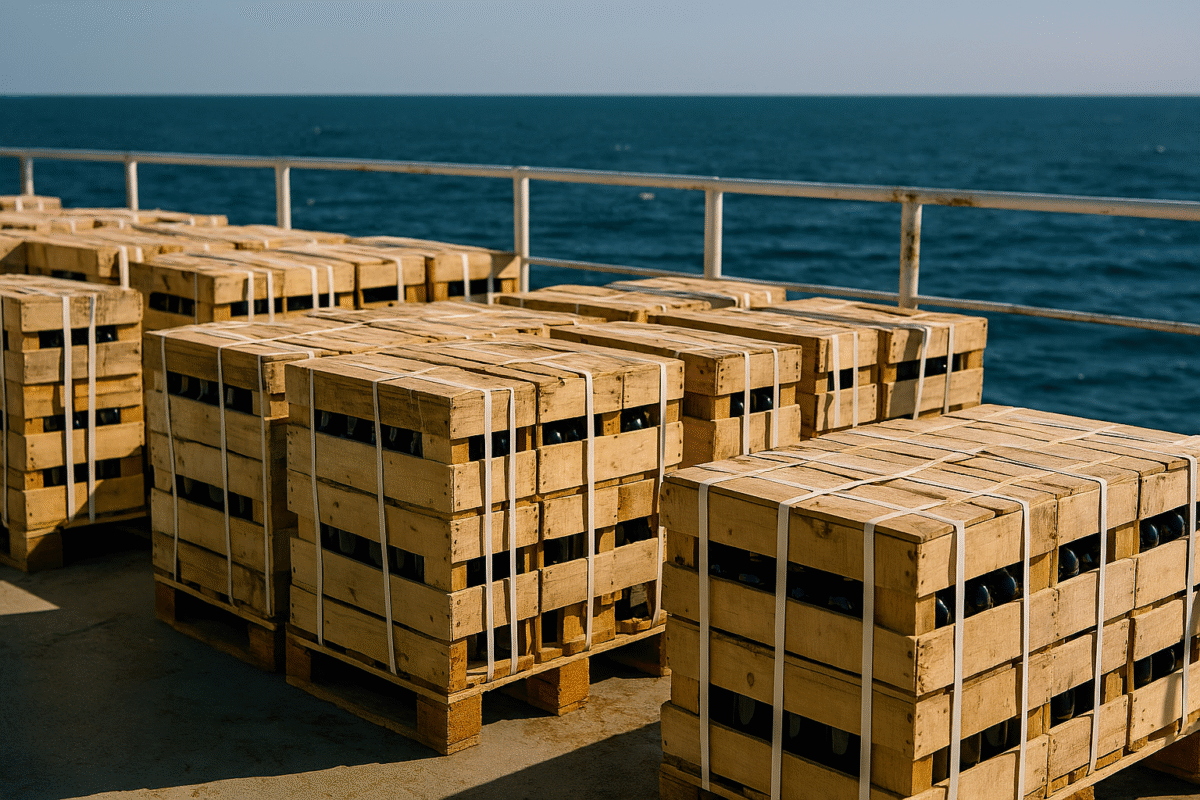A new report from the International Organisation of Vine and Wine (OIV) shows how re-exportation has become a structural force in the global wine market, shaping trade flows and value creation across continents.
Re-exportation reshaping global wine trade
The OIV’s latest Statistical Thematic Focus 2025, titled “The Global Trade in Wine: Role and Relevance of Re-exportation Hubs”, offers the first comprehensive estimate of global wine re-exports. It finds that re-exportation now represents a key driver in how wines reach new markets and consumers.
What is wine re-exportation?
Traditional wine-producing and exporting countries are typically located around the 40th parallel in both hemispheres. However, some nations export substantial quantities of wine despite producing little to none. This suggests that their wine exports originate from previously imported wine – a practice known as re-exporting.
According to the OECD glossary of statistical terms, “re-exports consist of foreign goods exported in the same state as previously imported, from the free circulation area, premises for inward processing or industrial free zones, directly to the rest of the world and from premises for customs warehousing or commercial free zones, to the rest of the world.”
Between 2018 and 2023, re-exports accounted for around 13% of total wine exports – equivalent to 14 million hectolitres valued at €4.6 billion. The report highlights how this activity supports market access and value creation beyond production, through logistics, bottling, storage and redistribution.
According to the OIV, the global wine trade now represents 47% of world consumption. Traditional European trading centres such as the United Kingdom continue to serve as major redistribution platforms, while new high-value gateways like Singapore have emerged in Asia. The report also points to Canada and Angola as rising regional connectors that are helping to diversify global trade routes.
“Re-exportation reveals the real geography of wine flows,” the OIV notes, “distinguishing between where wines are produced, traded and consumed.”
Global exports show steady long-term growth
Wine exports have grown steadily over the past two decades, with the share of exported wine in total global consumption rising from 5% in 1960 to nearly half by 2024. Since 2000, exports have increased by 4% per year in value, though volume growth has slowed to 2%.
In 2024, non-sparkling bottled wines made up two-thirds of total export value (€24 billion) and just over half of global export volume. Sparkling wines, which account for only 11% of volume, contributed almost a quarter of total value, reflecting their higher average prices. Bulk wines comprised nearly one-third of export volume but only 7% of total value.
Sparkling wines have shown the fastest growth since 2017, with value up 4.8% per year and volume up 3%. Non-sparkling bottled wines have shifted towards premiumisation, with value increasing 3.8% per year between 2009 and 2024 despite flat volumes.
The top three exporters – Italy, Spain and France – together represent 55% of global export volume. The ten largest exporting countries account for 85% of exports, underlining the sector’s high concentration.
A more complex, interconnected market
The OIV concludes that re-exportation has become a “structural element” of the global wine economy, shaping not only how wine moves but how it creates value. As trade routes evolve and new hubs emerge, understanding these flows will be critical for anticipating demand, improving transparency and strengthening market resilience.
The full report, “The Global Trade in Wine: Role and Relevance of Re-exportation Hubs”, is available on the OIV website: www.oiv.int.
Sources: OIV and The Drinks Business

